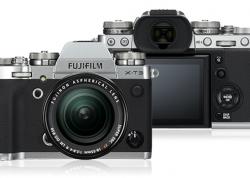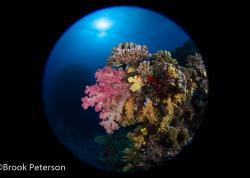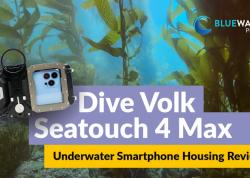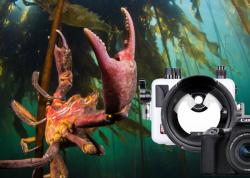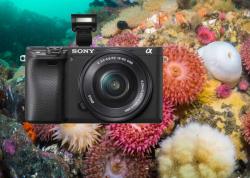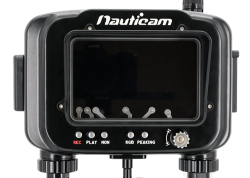Sony A1 vs Canon EOS R5

The Canon EOS R5 and the Sony A1 are arguably the world's two best cameras for underwater photo & video. However, they clock in at very different price points and offer a different set of features - despite very similar specs overall. In this article, we're going to break down the differences between these two cameras and which one we think is best for underwater photo and video.
US MSRP Canon EOS R5: $3899
US MSRP Sony A1: $6499
The Canon EOS R5
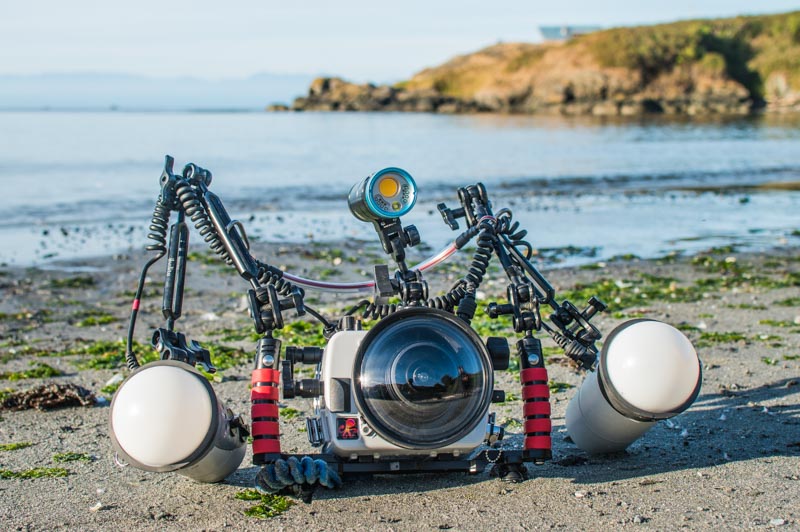
The Canon R5 caused quite the commotion in 2020 by being the first full frame hybrid mirrorless camera to announced the capability of capturing 8K video and 4K/120p. Moreover, the R5 presents additional compelling features like a state of the art autofocus system with useable underwater animal eye autofocus tracking and the best in-body image-stabilization system on the market - capable of up to 8 stops of correct. However, the 8K video from the R5 did not quite live up to the public's expectations as it caused the camera to overheat after about 20-30 minutes of filming.
Key Canon EOS R5 Specs
- New 45 Megapixel Full-Frame CMOS Sensor
- DIGIC X Image Processor (same as the 1DX Mark III)
- Canon's first 5 axis In-Body Image-Stabilization (IBIS) which works in conjunction with optical IS RF and EF lenses. Up to 8 stops of correction
- Canon RF Mount (compatible with EF mount lenses with the EF-EOS R mount adapter)
- Improved Dual Pixel II Autofocus with 1053 zones
- Low light AF capability down to EV -6 and up to 20 (f/1.2 lens, ISO 100)
- 100% of the sensor has AF coverage!
- Animal eye AF detection (for birds, cats, and dogs). It works about 20-40% of the time for fish eye detection in macro.
- 12fps burst shooting with mechanical shutter
- 180 shot RAW buffer @ 12fps
- 20 fps burst shooting with silent (electronic shutter)
- ISO 100-51200
- Mechanical shutter sync speed: 1/200 sec
- Dual card slots - 1x CFexpress and 1x SD UHS-II
- 8K video @ 30p, 10- bit 4:2:2 - using the full width of the sensor!
- Internal RAW and C-Log recording
- 4K oversampled video up to 120p, 10-bit 4:2:2
- 22 customizable functions
- 5.76 million dot OLED electronic viewfinder
- 490 shot battery life w/ LCD, 320 shot battery life w/ EVF (enough for about 3 dives in photo mode)
- Size: 5.45 X 3.84 X 3.46 in
- Weight: 1.63 lbs/738g (body w/ battery, CFexpress card)
Read the Full Canon EOS R5 Underwater Review
The Sony A1
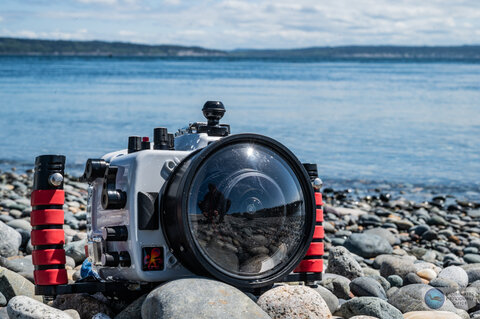
The Sony A1 is Sony's first full-frame mirrorless flagship camera. It goes beyond the R5 in offering new shutter technology that makes it possible to sync strobes with an electronic shutter that can shoot 50 MP bursts up to 30 frames per second. The camera also has more extensive video features than the R5, a higher sync speed, and a very quick autofocus system. But these additional features also come at a heavy price point.
Key Sony A1 Specifications
- New Full Frame 50MP Exmor RS Stacked CMOS Sensor
- 15 stops of dynamic range with improved colors, tones, and gradation
- New BIONZ XR Processor (introduced in the Sony A7S III)
- Continuous shooting up to 30fps w/ electronic shutter and 10fps w/mechanical shutter at full resolution - AE and AF operable throughout
- Updated Carbon-Fiber Mechanical Shutter for a more quiet and vibration-free performance
- Records video up to 8K/30p (oversampled from 8.6K), 4K/120p (oversampled)
- Improved electronic shutter - greatly reduced rolling shutter and flicker under artificial light
- THE ELECTRONIC SHUTTER WORKS WITH EXTERNAL FLASHES (and strobes)
- FLASH SYNC SPEEDS: up to 1/400sec (mechanical shutter; 1/500 in APS-C mode), 1/200 (electronic)
- Lightning quick AF with its 759 phase-detection points with 425 contrast-detection areas - covering 92% of the sensor
- AF system recalculates 120 times per second - 30% more accurate than A9II
- Better animal eye AF that can track birds - we will be testing to see if it can track fish
- 5 axis IBIS with 5.5 stops of recovery
- New Active steadyshot stabilization (introduced with the Sony A7S III)
- 10-bit 4:2:2 internal recording with 16-bit RAW external recording
- Full range of Log recording options - Cine, HLG, and S-Log
- Viewfinder: Electronic (OLED) - 9.44 million dots
- Dual CFexpress Type A / UHS-II SD Card
- No built-in flash
- Native ISO: 100 - 32,000
- Extended ISO: 50 - 102,400
- Shutter speed: 1/8000 - 30 seconds
- ISO 100 to 32000 (Extended: 50 to 102400)
- Fastest built-in wifi - can transmit video files over 5G
- Sony E Mount
- Dimensions: 5.07 x 3.81 x 2.74 in (128.9 x 96.9 x 69.7 mm)
- Weight: 1.6 lb (737g)
Read the Full Sony A1 Underwater Review
Support our content and order a Sony A1 or Canon EOS R5 underwater housing at Bluewater Photo:
Check out our full Sony A1 Underwater Housing Buyer's Guide
Check out our full Canon EOS R5 Underwater Housing Buyer's Guide
Image Quality: Tie
Although the Sony A1 has a 50 megapixel sensor and the Canon R5 has a 45 megapixel sensor, the difference in resolution is negligible. Both cameras also perform surprisingly well in low light and have similar dynamic range performance. We found that for both cameras, it was more difficult to recover information from the highlights than the shadows. We also hoped for better dynamic range performance from both cameras. Overall, the image quality with both cameras is excellent and not overly noisy like the Nikon Z7II or Sony A7R IV.
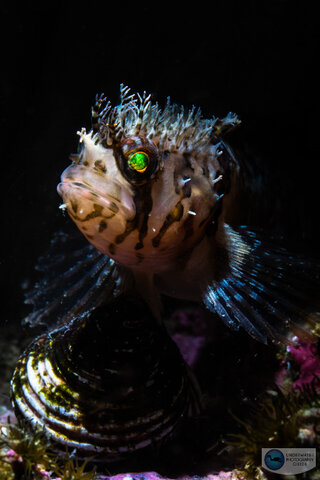
Burst Shooting Speeds: Tie
On paper the Sony A1 has quicker burst shooting speeds - with the electronic shutter it shoots at 30fps compared to the Canon R5 which shoots 20 fps. However, burst shooting speeds with the mechanical shutter is more important for underwater photographers who in most (but not all) cases cannot use the electronic shutter with strobes. Here the Canon R5 beats the Sony A1 with 12 fps vs 10 fps.
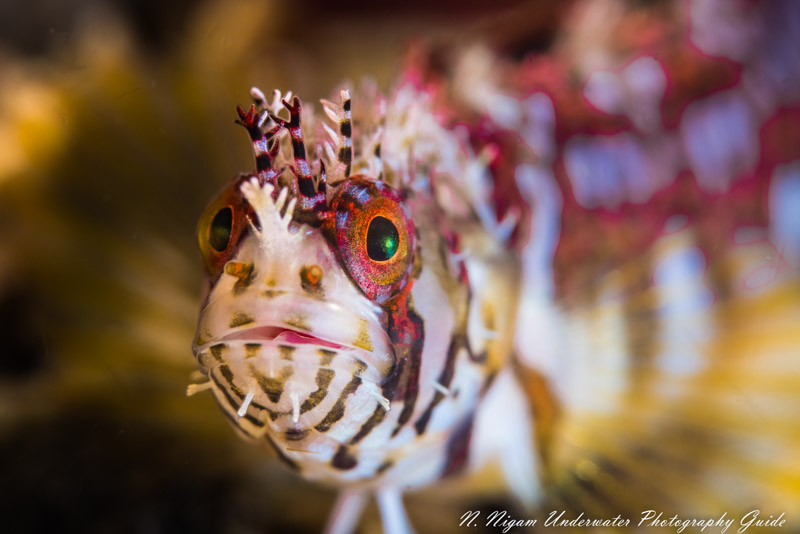
Strobe Sync Speed: Sony A1
The Sony A1 is the first modern full frame camera to feature a strobe sync speed as high as 1/400s. That's a full stop more than the Canon R5's sync speed of 1/200. This means you can recover a stop more of details in the highlights of an image when you're shooting sunballs, get better black backgrounds, and freeze your image better with the A1.
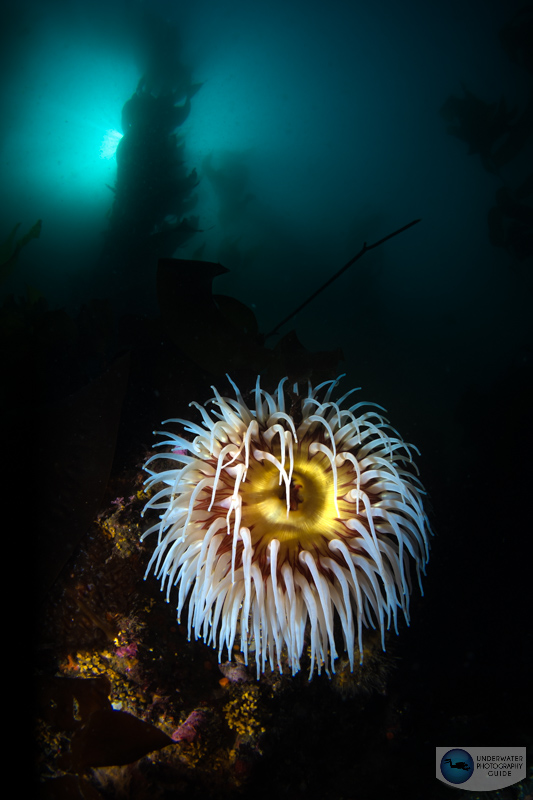
Autofocus Speed: Tie
Bot camera's autofocus systems are lighting fast. The Sony A1 is slightly quicker than the R5 overall and more accurate with its autofocus tracking system. However, the difference is hardly noticeable. That being said, the R5 has a more developed animal eye autofocus tracking system than the Sony A1 and it actually works on fisheyes. Therefor, we labled this category as a tie.
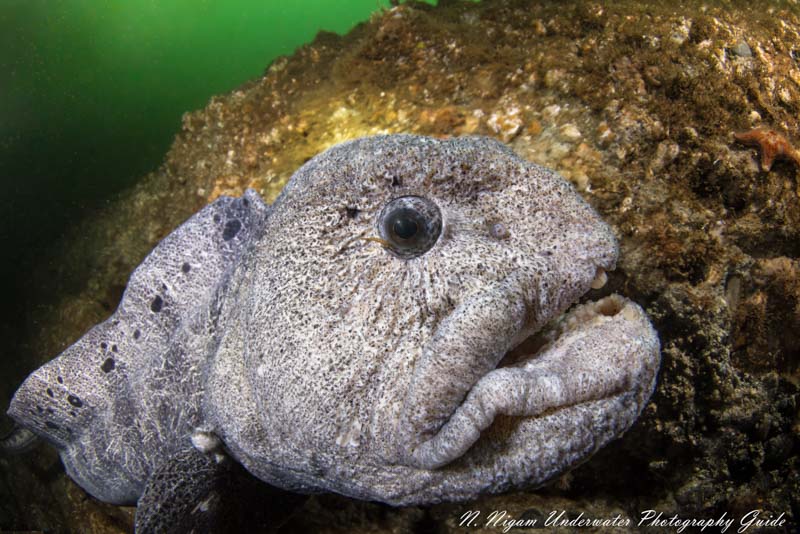
Video Features: Sony A1
While the Canon R5 can record RAW video internally, that's about all it can do better than the Sony A1 when it comes to video. In addition to being able to record 16 bit RAW externally, the Sony A1 has a much better workflow and codec options for video than the R5. The A1 has better quality 8K video with an image that is oversampled from 8.6K. It also has a wider range of Log picture profile options for different color grading workflows in post processing. Finally, the Sony A1 is not quite as quick as the Canon EOS R5 to overheat, giving you a little more leeway to shoot longer with the A1.
Image Stabilization: Canon R5
This one is a no brainer. Canon's in-body image-stabilization (IBIS) system is capable of recovering up to 8 stops, vs 5.5 stops in the A1. In our tests, we could clearly tell the difference. With Canon's IBIS we were able to easily record handheld video with our 100mm macro lens and shoot at shutter speeds lower than 1/8s with our 8-15mm fisheye. We never would have been able to approach that kind of capability with the A1.
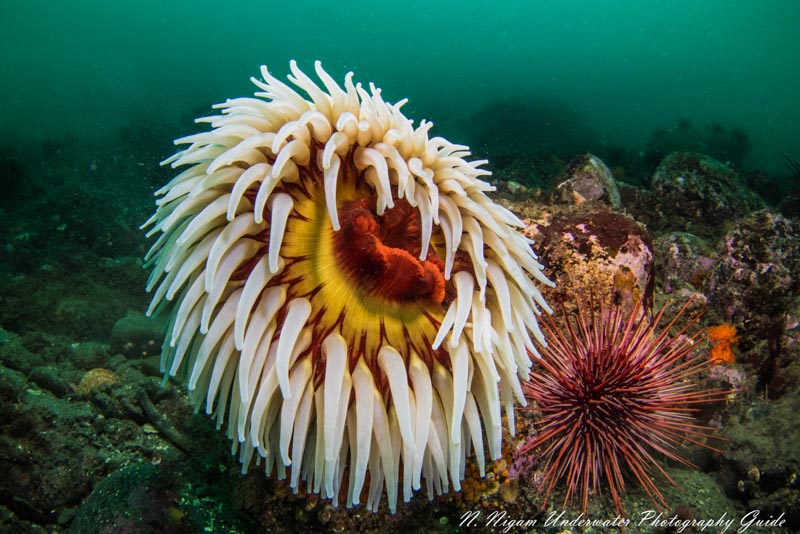
Overheating: Sony A1 (Barely)
Both cameras will eventually overheat if you record 8K or 4K/120p for too long. The Sony A1 can last anywhere from 10 minutes to half an hour longer than the Canon R5. During our dives, neither of our cameras overheated though we did receive temperature warnings on the Sony A1 and no the R5 after diving for a similar amount of time.
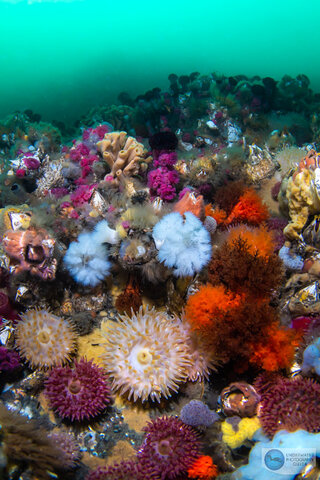
Battery Life: Neither
The battery life on both cameras is poor. The Canon R5 is slightly better. We could get about 3 dives per battery with the R5. With the Sony A1, the battery only lasted about two dives and sometimes one long dive.
Underwater Lens Options: Canon R5
Canon's lenses are fantastic. For underwater photography, Canon lenses are much more effective than Sony lenses. The Canon 100mm macro lens can stop down a lot farther than the Sony 90mm macro for much more depth of field. Moreover, Canon has a dedicated fisheye option for wide-angle whereas you need to use a workaround for the Sony A1. If you are interested in wide angle options for the Sony A1, please contact the experts at Bluewater Photo to find the right solution.
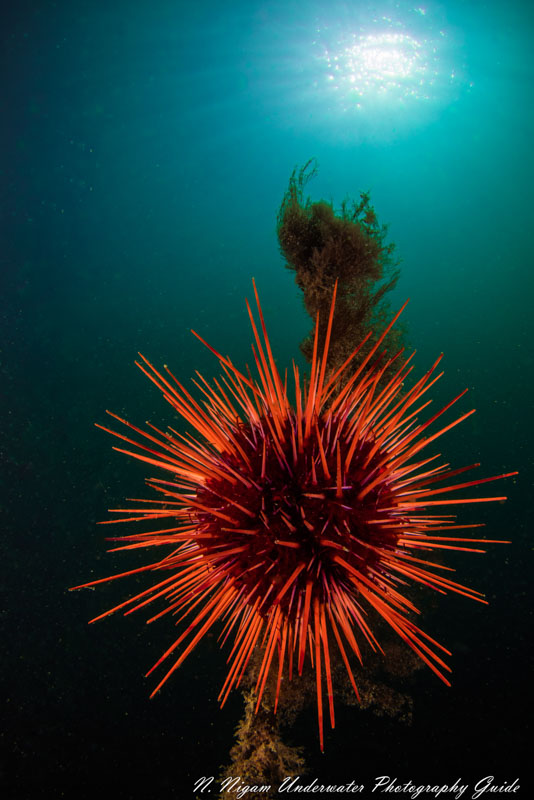
Underwater Housing Options: Tie
Currently, there are more housing options available for the Canon EOS R5 from every major brand of housing. However, the Sony A1 housings from Nauticam and Ikelite are also compatible with the Sony A7S III. If you want the ultimate Sony system, we recommend the Sony A1. If you want a wide range of housing options, check out underwater housings for the Canon EOS R5.
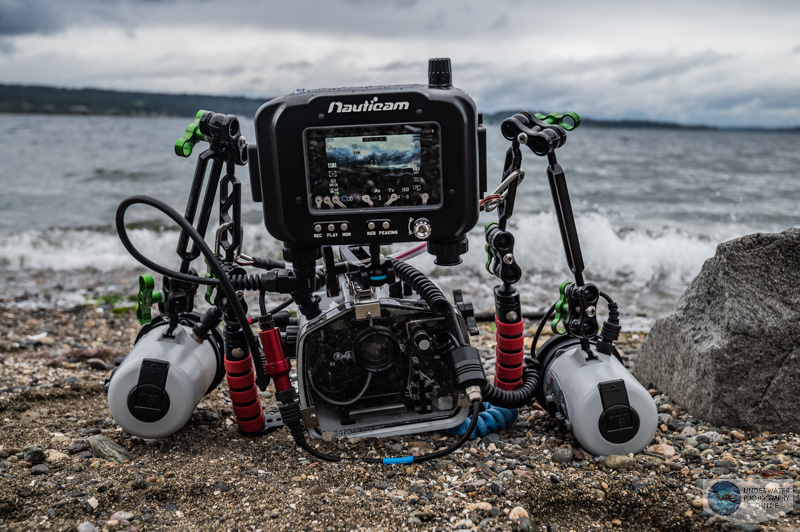
Price: Canon R5
At $3899 for the camera body, the Canon EOS R5 is the clear winner when it comes to price. The Sony A1, which is priced at $6499, is priced so steeply because it's a flagship camera. You have to pay a premium for the best of the best.
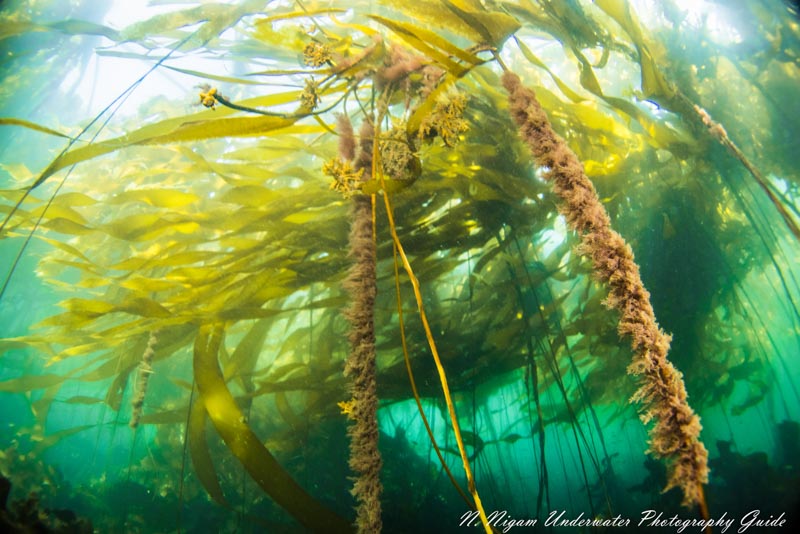
Winner: Canon EOS R5
Overall, its nice new technologies inthe Sony A1 like electronic shutter-strobe sync, higher mechanical sync speeds, higher burst shooting rates, and a wider range of video options. But overall, the Canon R5 pulls ahead of the Sony A1 because it is very affordably priced for many of the same features such as 8K & 4K/120p video recording, a quick AF system, quick burst shooting speeds up to 20fps, and more. In fact, the R5 surpasses the A1 with its in-body image-stabilization, animal eye autofocus tracking, and most importantly, underwater lens options. Regardless of which camera we picked, you cannot go wrong with either camera. Both are capable of changing the way people shoot underwater.
Who Should Buy the Canon EOS R5?
- Professionals who want the best possible hybrid camera for the best price possible
- Canon shooters
- Photo-oriented hybrid photo & video shooters
- Wide angle shooters who want a great fisheye lens option
- Videographers that take less than 20 minutes of 8K or 4K/120p video in a dive
Who Should Buy the Sony A1?
- Camera aficionados who wan the cutting edge technology
- Photographer that rely on burst shooting and quick action shooters
- Video-oriented hybrid photo & video shooters
- Sony shooters
- People that want to use Sony's best photo and best video camera in one housing
- Videographers that take more than 20 minutes of 8K or 4K/120p video in a dive
Support our content and order a Sony A1 underwater housing at Bluewater Photo:
Nauticam Sony A1Underwater Housing
Ikelite Sony A1 Underwater Housing
Sea & Sea Sony A1 Underwater Housing
Aquatica Sony A1 Underwater Housing
Isotta Sony A1 Underwater Housing
Order a Sony A1 Camera Body at Bluewater Photo:
Check out our full Sony A1 Underwater Housing Buyer's Guide
Purchase a Canon EOS R5 underwater housing at Bluewater Photo:
Nauticam Canon EOS R5 Underwater Housing
Ikelite Canon EOS R5 Underwater Housing
Sea & Sea Canon EOS R5 Underwater Housing
Aquatica Canon EOS R5 Underwater Housing
Isotta Canon EOS R5 Underwater Housing
More Canon EOS R5 Content:
Top Canon EOS R5 Underwater Settings
Does the Canon EOS R5 Overheat Underwater?
RECOMMENDED ARTICLES
SUPPORT THE UNDERWATER PHOTOGRAPHY GUIDE:
The Best Service & Prices on u/w Photo Gear
 Visit Bluewater Photo & Video for all your underwater photography and video gear. Click, or call the team at (310) 633-5052 for expert advice!
Visit Bluewater Photo & Video for all your underwater photography and video gear. Click, or call the team at (310) 633-5052 for expert advice!
The Best Pricing, Service & Expert Advice to Book your Dive Trips
 Bluewater Travel is your full-service scuba travel agency. Let our expert advisers plan and book your next dive vacation. Run by divers, for divers.
Bluewater Travel is your full-service scuba travel agency. Let our expert advisers plan and book your next dive vacation. Run by divers, for divers.




